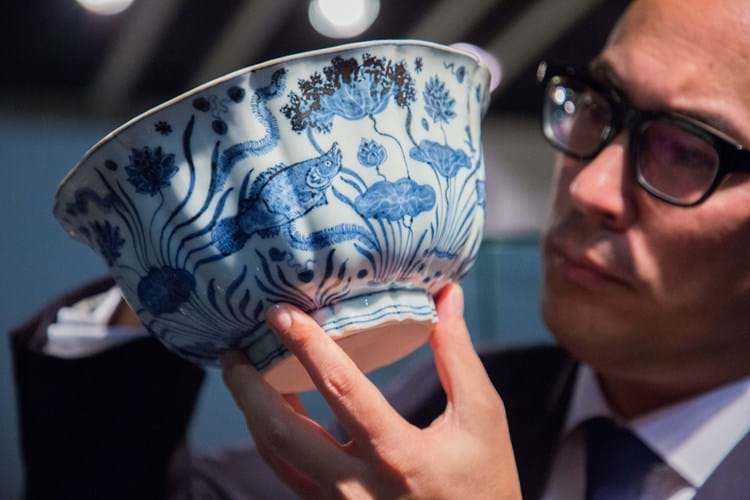
The 9in (23cm) lobed bowl, expected to fetch ‘in excess of HK$100m’ sold to an Asian private collector.
No comparable piece from the reign of the art-loving Xuande emperor (1425-35) has ever been offered at auction before. Across its lobed form it is intricately painted in tones of underglaze blue with a design of fish swimming in a lotus pond. In addition to the recognised species of carp and mandarin fish are fangyu (a type of bream), the latter rarely depicted on Chinese porcelain.
Philosophical Significance
The theme of fish swimming in a pond has great philosophical significance in China and features frequently in Daoist allegories popular in the Ming period. The only similar examples are two smaller bowls preserved in the National Palace Museum, Taipei.
This example, preserved in extraordinary condition, has been both revered and extensively published in Japan since its first public exhibition at the Tokyo National Museum in 1963.
The price is the second highest for Ming porcelain and second only to the Meiyintang Chenghua period ‘chicken cup’ sold for a hammer price of HK$250m at Sotheby’s Hong Kong in April 2014. It was bought by Liu Yiqian, owner of the Long Museum complex in Shanghai.





